mithi/hexapod-robot-simulator

A simple browser-based hexapod robot simulator built from first principles
| repo name | mithi/hexapod-robot-simulator |
| repo link | https://github.com/mithi/hexapod-robot-simulator |
| homepage | |
| language | Python |
| size (curr.) | 2348 kB |
| stars (curr.) | 484 |
| created | 2020-02-14 |
| license | MIT License |
☕ 





🕷️ Mithi’s Hexapod Robot Simulator
- A bare minimum browser-based hexapod robot simulator built from first principles 🕷️
- If you like this project, consider buying me a few ☕ cups of coffee. 💕
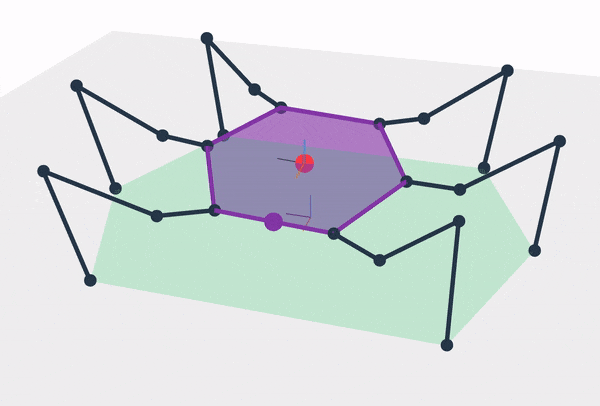 |
 |
| STATUS | FEATURE | DESCRIPTION |
|---|---|---|
| 🎉 | Forward Kinematics | Given the angles of each joint, what does the robot look like? |
| 🎉 | Inverse Kinematics | What are the angles of each joint to make the robot look the way I want? Is it even possible? Why or why not? |
| 🎉 | Uniform Movements | If all of the legs behaved the same way, how will the hexapod robot as a whole behave? |
| 🎉 | Customizability | Set the dimensions and shape of the robot’s body and legs. (6 parameters) |
| 🎉 | Usability | Control the camera view, pan, tilt, zoom, whatever. |
| 🎉 | Simplicity | Minimal dependencies. Depends solely on Numpy for calculations. Uses only Plotly Dash for plotting, Dash can be safely replaced if a better 3d plotting library is available. |
| ❗ | Stability Check (WIP) | If we pose the robot in a particular way, will it fall over? |
| ❗ | Fast | Okay, it’s not as fast as I wanted, but when run locally, it’s okay |
| ❗ | Bug-free | Fine, right now there’s still room for improvement |
| ❗ | Well-tested | Yeah, I need to compile test cases first |
🕷️ Preview
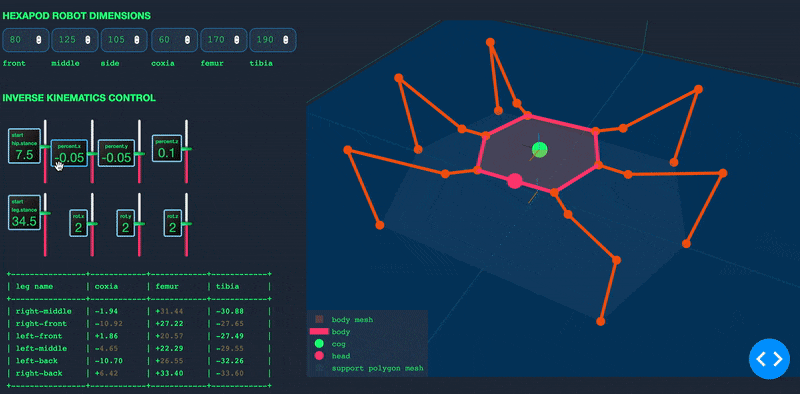 |
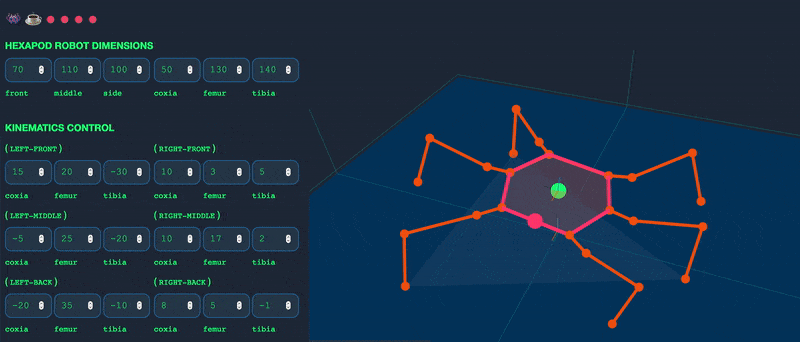 |
|---|---|
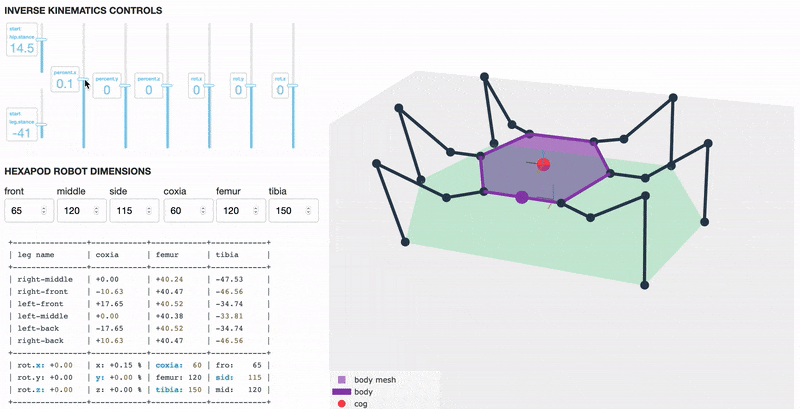 |
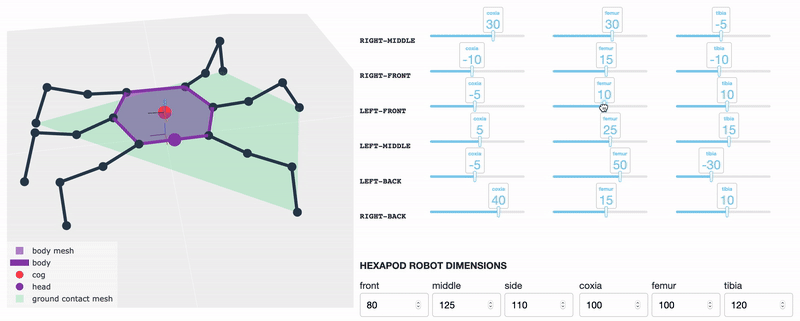 |
🕷️ Requirements
- Python 3.8.1
- Plotly Dash 1.10.0
- Plotly Dash Daq 0.4.0
- Numpy 1.18.1
- See also ./requirements.txt
🕷Run
$ python index.py
Running on http://127.0.0.1:8050/
- Modify default settings with ./settings.py
- Dark Mode is the default - modify page styles with ./style_settings.py
⚠️ Known Issues
🕷️Conventions and Algorithms
- Definitions
- The Inverse Kinematics Algorithm used for this project
- How to find the orientation of the hexapod with respect to the ground given we know all the orientations of the six legs with respect to the robot’s body.
- Algorithm 1 when we know which of the three points of each leg could contact the ground
- Algorithm 2 when we don’t know which of points of which legs could be in contact with the ground
- How to make the hexapod step on the correct target ground contacts
- How to determine if the hexapod should twist and by how much
🕷️ Screenshots
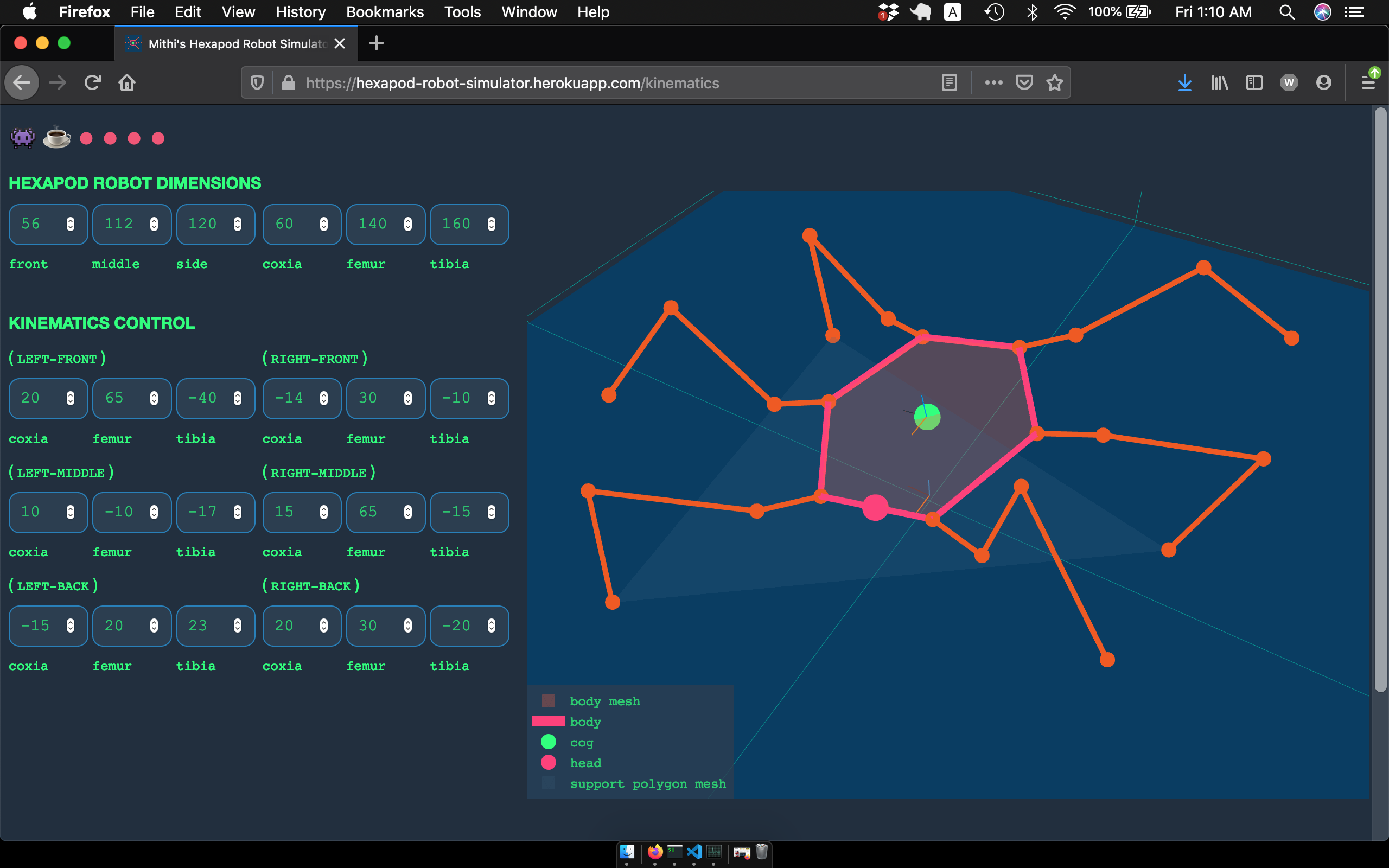 |
|---|
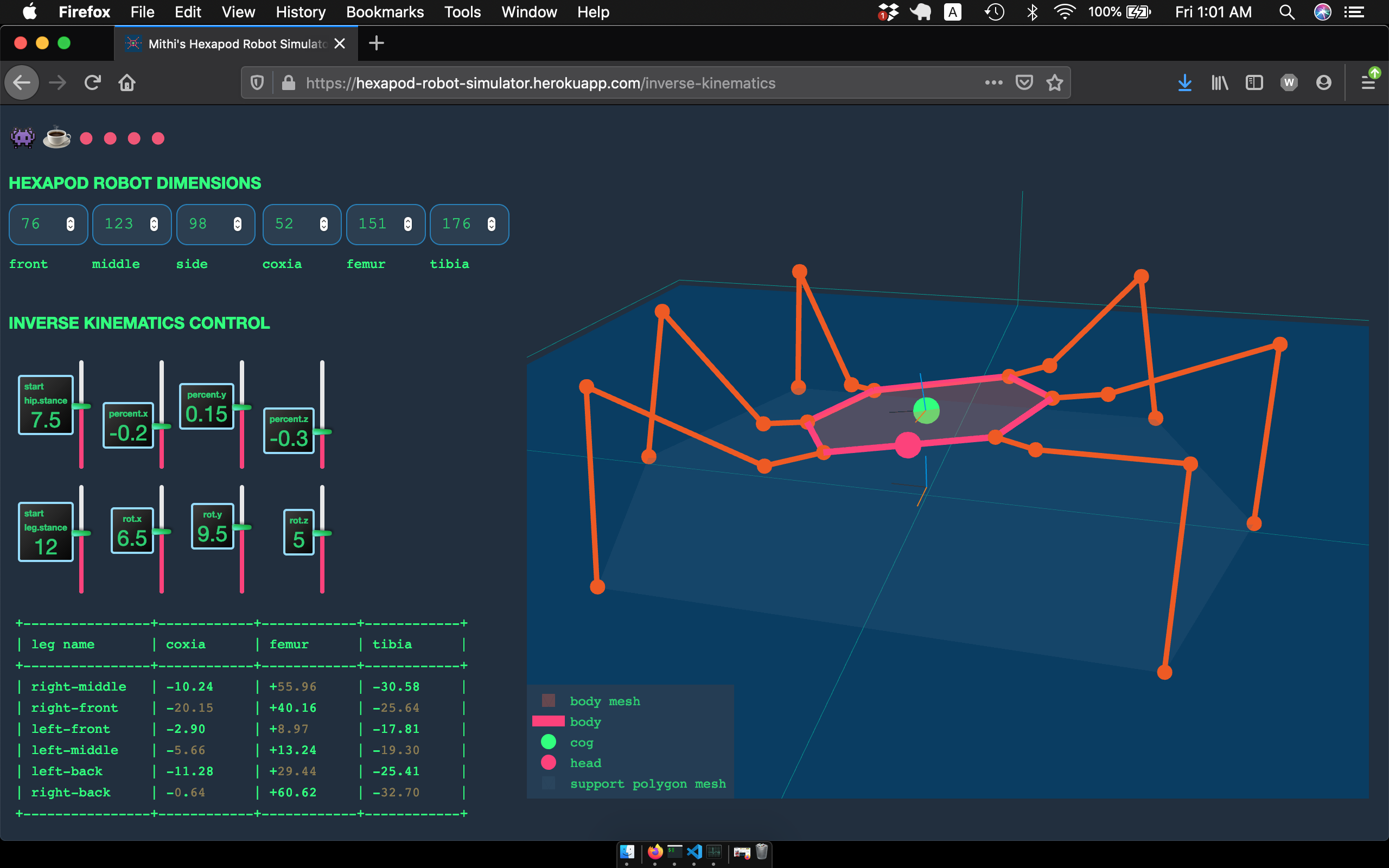 |
🕷️ Notes
-
Now live on https://hexapod-robot-simulator.herokuapp.com ! BUT (and a big one) I highly suggest that you run it locally. When run locally, it’s pretty speedy! On the other hand, the link above is barely usable. Might convert this to to be a fully client-side Javascript app later, maybe?
-
This implementation uses matrices, NOT quaternions. I’m aware that quaternions is far superior in every single way. In the (un)forseeable future, maybe?
-
Honestly, My IK algorithm is just something I came up with based on what I remember back in college plus browsing through the Mathematics Stack Exchange. It’s just the most intuitive that I can think of. If you want something closer to the state-of-the-art, maybe checkout Unity’s Fast IK or ROS IKFast.
-
I believe that the idea that it’s best if we are kind to one another shouldn’t be controversial. And I shouldn’t be afraid to say that.






